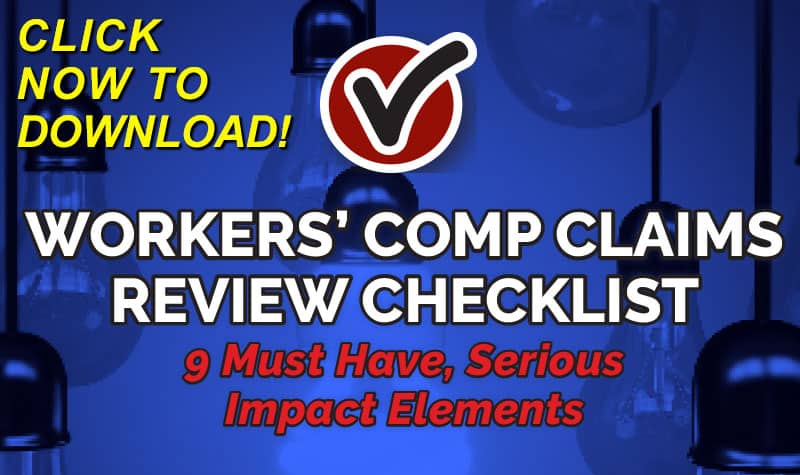In a recent conversation between the risk manager of a self-insured employer and an independent claims auditor, the risk manager advised he was canceling the annual workers compensation claims file audit as a way to save money. The independent claims auditor immediately thought “penny wise and pound foolish”. The risk manager was going to obtain a short term savings by not having the audit, but based on the claims handling mistakes uncovered in prior audits, the long term costs of canceling the audit would far outweigh the short term gain.
The independent claims auditor knew if he could get the risk manager to think this decision through, the risk manager would not cancel the annual claims audit. In this scenario the claims auditor is not affiliated with the broker because although brokerage claims auditors are excellent, in some cases, it is be more difficult for them to bring forward issues that are not favorable for the insurance carrier. The claims auditor pulled out the prior two audit reports for this self-insured employer and started discussing the findings from the previous year and the year before that. The topics the independent claims auditor discussed are as follows: (WCxKit)
1- To Make Quality of Handling Clear
In the initial audit in 2009, the TPA handling the claims for the self-insured employer was doing a mediocre job. Investigations were often incomplete and compensability issues were decided without the proper information. Seven files had been paid where the compensability was doubtful, costing the self-insured employer $27,000+. Due to the Best Practices the independent claims auditor recommended to the self-insured employer, in the 2010 audit the TPA was doing a better job, only 3 files had been paid without proper compensability documentation, at a lost of $11,000. Would the TPA's claim handling be perfect in 2011? Not likely, but without the claims audit in 2011, the self-insured employer was making a non-verbal statement to the TPA that further improvement in their claims handling quality was not expected.
2- Make Reserving More Accurate
The 2009 audit of 125 workers compensation files identified 27 files that were under reserved and 8 files that were over reserved, with a net under reserving of $520,000. The independent claims auditor asked the risk manager if he remembered the consternation he had over that problem and how he had to explain it to the CFO, and add over a half million dollars to the reserves at one time. While the 2010 audit results were much better, there were still 12 files that were under reserved and 3 files over reserved, resulting in a $127,000 increase in the reserves.
3- Identify Leakage
The claims auditor reviewed the audit results for leakage. In 2009, numerous medical bills were being paid without being submitted for repricing to the medical fee bill schedule. Based on extrapolation of the unaudited fee bills for the 125 files to the total fee bills for all files, it was estimated the TPA has paid out approximately $117,000 more than should have been paid. To the TPA's credit (and the self-insured employer's insistence that future medical bills overpayments be reimbursed to the self-insured employer), the 2010 claims audit did not identify any medical bills subject to the fee schedule that were not submitted for review and repricing. (Failure to use the medical fee bill schedule is just one of many possible areas for leakage in a claims office).
4- Find Subrogation Potential
In the 2009 audit, 3 files totaling $9,000+ were identified as having subrogation potential but no subrogation activity. In the 2010 audit, 5 files totaling $13,000+ were identified as missed subrogation opportunities. The claims auditor pointed out to the risk manager that just the money recovered on the missed subrogation opportunities covered the cost of the claims file audit for each year.
5- Locate Fraud
The claims auditor pointed out that in the 2009 audit, one file where the work comp adjuster has missed several red flags that were noted by the claims auditor, resulted in the file being referred to the TPA's Special Investigation Unit (SIU). The file was checked in the 2010 audit and it was noted after the SIU investigation and the facts were presented to the attorney for the employee, the attorney dropped the demand of $175,000 to $5,000, and then later dropped the claim altogether with nothing further being paid to the employee.
6- Determine Reimbursement from Reinsurance
The 2009 audit identified a file where $637,000 had been paid out on a work comp claim open since 2003. The self-insured employer had a $500,000 retention. While the excess carrier had been notified of the exposure in 2004 when the dollars paid on the claim passed the $250,000 mark, neither the TPA or the self-insured employer had ever sent a request to the excess carrier seeking reimbursement of the $137,000 paid out in excess of the self-insured employer's retention. (After the claims auditor pointed out this oversight, they requested and received their $137,000 reimbursement).
7- Get Second Injury Fund Recoveries
In some of the states where the TPA was handling claims for the self-insured employer, the states operated a second injury fund. Two files in the 2009 and one file in the 2010 audit were eligible for partial reimbursement from the second injury funds. After the claims auditor brought these files to the attention of the TPA, all 3 files resulted in recoveries for the self-insured employer.
After about fifteen minutes of reviewing the results of the two prior audits, the risk manager did an about- face, realizing the claims audit was not a cost of doing business, but a method of reducing cost. The 2011 claims audit has been scheduled. (WCxKit)
If you would like to reduce your claims handling cost, please contact us about finding a qualified claims file audit firm.
Author Rebecca Shafer, JD, President of Amaxx Risks Solutions, Inc. is a national expert in the field of workers compensation. She is a writer, speaker, and website publisher. Her expertise is working with employers to reduce workers compensation costs, and her clients include airlines, healthcare, printing/publishing, pharmaceuticals, retail, hospitality, and manufacturing. See www.LowerWC.com for more information. Contact:RShafer@ReduceYourWorkersComp.com.
WC IQ TEST: http://www.workerscompkit.com/intro/
WORK COMP CALCULATOR: http://www.LowerWC.com/calculator.php
SUBSCRIBE: Workers Comp Resource Center Newsletter
Do not use this information without independent verification. All state laws vary. You should consult with your insurance broker or agent about workers comp issues.
©2011 Amaxx Risk Solutions, Inc. All rights reserved under International Copyright Law. If you would like permission to reprint this material, contact Info@ReduceYourWorkersComp.com
















